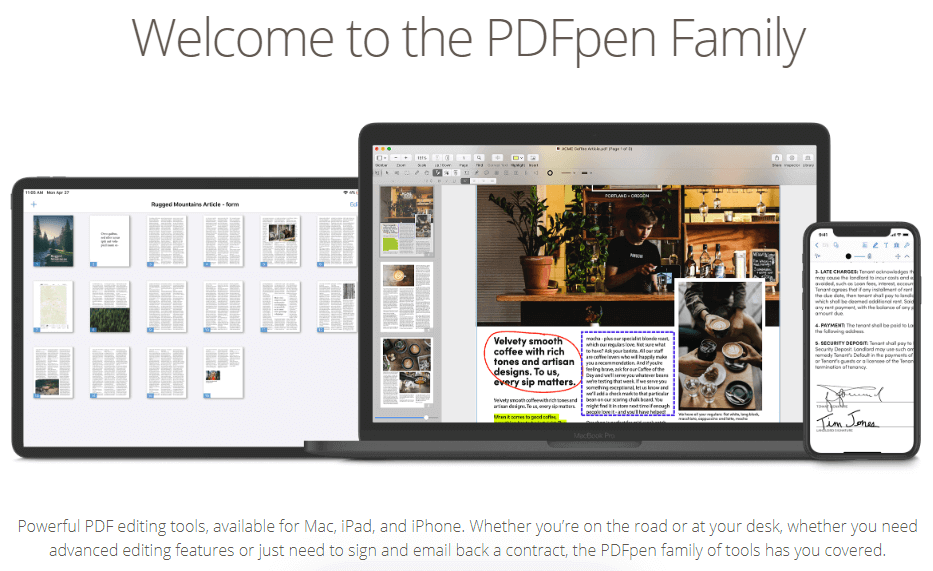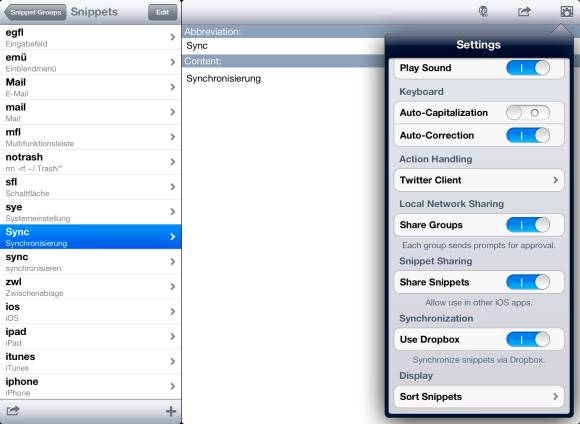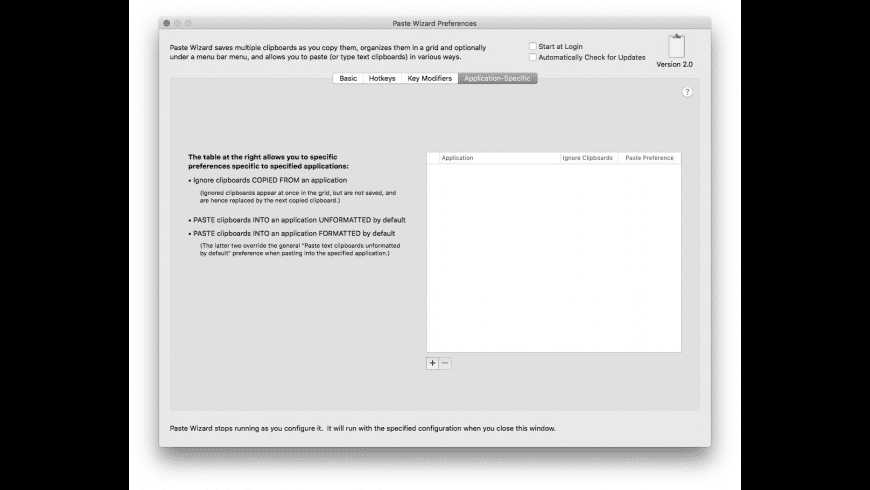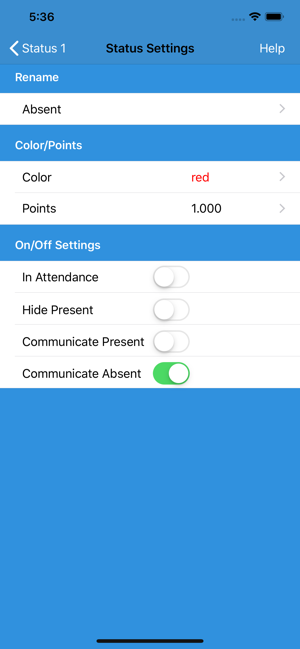Unlike the software developed for Windows system, most of the applications installed in Mac OS X generally can be removed with relative ease. TextExpander 5.0.1 is a third party application that provides additional functionality to OS X system and enjoys a popularity among Mac users. However, instead of installing it by dragging its icon to the Application folder, uninstalling TextExpander 5.0.1 may need you to do more than a simple drag-and-drop to the Trash.
TextExpander 5.0.1 is a third party application that provides additional functionality to OS X system and enjoys a popularity among Mac users. However, instead of installing it by dragging its icon to the Application folder, uninstalling TextExpander 5.0.1 may need you to do more than a simple drag-and-drop to the Trash. Read reviews, compare customer ratings, see screenshots, and learn more about QuickKey - Text Expansion. Download QuickKey - Text Expansion and enjoy it on your iPhone, iPad, and iPod touch.
Download Mac App RemoverWhen installed, TextExpander 5.0.1 creates files in several locations. Generally, its additional files, such as preference files and application support files, still remains on the hard drive after you delete TextExpander 5.0.1 from the Application folder, in case that the next time you decide to reinstall it, the settings of this program still be kept. But if you are trying to uninstall TextExpander 5.0.1 in full and free up your disk space, removing all its components is highly necessary. Continue reading this article to learn about the proper methods for uninstalling TextExpander 5.0.1.
Manually uninstall TextExpander 5.0.1 step by step:
Most applications in Mac OS X are bundles that contain all, or at least most, of the files needed to run the application, that is to say, they are self-contained. Thus, different from the program uninstall method of using the control panel in Windows, Mac users can easily drag any unwanted application to the Trash and then the removal process is started. Despite that, you should also be aware that removing an unbundled application by moving it into the Trash leave behind some of its components on your Mac. To fully get rid of TextExpander 5.0.1 from your Mac, you can manually follow these steps:
1. Terminate TextExpander 5.0.1 process(es) via Activity Monitor
Before uninstalling TextExpander 5.0.1, you’d better quit this application and end all its processes. If TextExpander 5.0.1 is frozen, you can press Cmd +Opt + Esc, select TextExpander 5.0.1 in the pop-up windows and click Force Quit to quit this program (this shortcut for force quit works for the application that appears but not for its hidden processes).
Open Activity Monitor in the Utilities folder in Launchpad, and select All Processes on the drop-down menu at the top of the window. Select the process(es) associated with TextExpander 5.0.1 in the list, click Quit Process icon in the left corner of the window, and click Quit in the pop-up dialog box (if that doesn’t work, then try Force Quit).
2. Delete TextExpander 5.0.1 application using the Trash

Textexpander 5.1.5 Download
First of all, make sure to log into your Mac with an administrator account, or you will be asked for a password when you try to delete something.
.png)
Open the Applications folder in the Finder (if it doesn’t appear in the sidebar, go to the Menu Bar, open the “Go” menu, and select Applications in the list), search for TextExpander 5.0.1 application by typing its name in the search field, and then drag it to the Trash (in the dock) to begin the uninstall process. Alternatively you can also click on the TextExpander 5.0.1 icon/folder and move it to the Trash by pressing Cmd + Del or choosing the File and Move to Trash commands.
For the applications that are installed from the App Store, you can simply go to the Launchpad, search for the application, click and hold its icon with your mouse button (or hold down the Option key), then the icon will wiggle and show the “X” in its left upper corner. Click the “X” and click Delete in the confirmation dialog.
Download Mac App Remover3. Remove all components related to TextExpander 5.0.1 in Finder
Though TextExpander 5.0.1 has been deleted to the Trash, its lingering files, logs, caches and other miscellaneous contents may stay on the hard disk. For complete removal of TextExpander 5.0.1, you can manually detect and clean out all components associated with this application. You can search for the relevant names using Spotlight. Those preference files of TextExpander 5.0.1 can be found in the Preferences folder within your user’s library folder (~/Library/Preferences) or the system-wide Library located at the root of the system volume (/Library/Preferences/), while the support files are located in '~/Library/Application Support/' or '/Library/Application Support/'.
Open the Finder, go to the Menu Bar, open the “Go” menu, select the entry:|Go to Folder... and then enter the path of the Application Support folder:~/Library
Search for any files or folders with the program’s name or developer’s name in the ~/Library/Preferences/, ~/Library/Application Support/ and ~/Library/Caches/ folders. Right click on those items and click Move to Trash to delete them.
Meanwhile, search for the following locations to delete associated items:
- /Library/Preferences/
- /Library/Application Support/
- /Library/Caches/

Besides, there may be some kernel extensions or hidden files that are not obvious to find. In that case, you can do a Google search about the components for TextExpander 5.0.1. Usually kernel extensions are located in in /System/Library/Extensions and end with the extension .kext, while hidden files are mostly located in your home folder. You can use Terminal (inside Applications/Utilities) to list the contents of the directory in question and delete the offending item.
4. Empty the Trash to fully remove TextExpander 5.0.1
If you are determined to delete TextExpander 5.0.1 permanently, the last thing you need to do is emptying the Trash. To completely empty your trash can, you can right click on the Trash in the dock and choose Empty Trash, or simply choose Empty Trash under the Finder menu (Notice: you can not undo this act, so make sure that you haven’t mistakenly deleted anything before doing this act. If you change your mind, before emptying the Trash, you can right click on the items in the Trash and choose Put Back in the list). In case you cannot empty the Trash, reboot your Mac.
Download Mac App RemoverTips for the app with default uninstall utility:
You may not notice that, there are a few of Mac applications that come with dedicated uninstallation programs. Though the method mentioned above can solve the most app uninstall problems, you can still go for its installation disk or the application folder or package to check if the app has its own uninstaller first. If so, just run such an app and follow the prompts to uninstall properly. After that, search for related files to make sure if the app and its additional files are fully deleted from your Mac.
Automatically uninstall TextExpander 5.0.1 with MacRemover (recommended):
No doubt that uninstalling programs in Mac system has been much simpler than in Windows system. But it still may seem a little tedious and time-consuming for those OS X beginners to manually remove TextExpander 5.0.1 and totally clean out all its remnants. Why not try an easier and faster way to thoroughly remove it?
If you intend to save your time and energy in uninstalling TextExpander 5.0.1, or you encounter some specific problems in deleting it to the Trash, or even you are not sure which files or folders belong to TextExpander 5.0.1, you can turn to a professional third-party uninstaller to resolve troubles. Here MacRemover is recommended for you to accomplish TextExpander 5.0.1 uninstall within three simple steps. MacRemover is a lite but powerful uninstaller utility that helps you thoroughly remove unwanted, corrupted or incompatible apps from your Mac. Now let’s see how it works to complete TextExpander 5.0.1 removal task.
1. Download MacRemover and install it by dragging its icon to the application folder.
2. Launch MacRemover in the dock or Launchpad, select TextExpander 5.0.1 appearing on the interface, and click Run Analysis button to proceed.
3. Review TextExpander 5.0.1 files or folders, click Complete Uninstall button and then click Yes in the pup-up dialog box to confirm TextExpander 5.0.1 removal.
The whole uninstall process may takes even less than one minute to finish, and then all items associated with TextExpander 5.0.1 has been successfully removed from your Mac!
Benefits of using MacRemover:

MacRemover has a friendly and simply interface and even the first-time users can easily operate any unwanted program uninstallation. With its unique Smart Analytic System, MacRemover is capable of quickly locating every associated components of TextExpander 5.0.1 and safely deleting them within a few clicks. Thoroughly uninstalling TextExpander 5.0.1 from your mac with MacRemover becomes incredibly straightforward and speedy, right? You don’t need to check the Library or manually remove its additional files. Actually, all you need to do is a select-and-delete move. As MacRemover comes in handy to all those who want to get rid of any unwanted programs without any hassle, you’re welcome to download it and enjoy the excellent user experience right now!
This article provides you two methods (both manually and automatically) to properly and quickly uninstall TextExpander 5.0.1, and either of them works for most of the apps on your Mac. If you confront any difficulty in uninstalling any unwanted application/software, don’t hesitate to apply this automatic tool and resolve your troubles.
Download Mac App RemoverAfter upgrading to Safari 5.0.1, I noticed that the flashing text insertion point in Mailplane, the WebKit-based application that improves Gmail’s Web interface, stopped working when I used the arrow keys. To be specific, the insertion point disappeared entirely, such that it was impossible to tell where typed text would appear. Relaunching Mailplane made no difference, nor did turning off utilities (like Keyboard Maestro and TextExpander) that mess with the keyboard. Interestingly, the bug bit me only when I was writing plain text mail; if I switched to Rich Formatting for a given message, the insertion point worked properly again. Alas, I far prefer writing plain text messages.
A quick trip to the Mailplane support mailing list revealed what was going on. Mailplane’s developer, Ruben Bakker, identified the problem as being an interaction between the version of WebKit installed by Safari 5.0.1 and the current 10.1.53.64 version of Flash Player (that’s later than the version that Apple ships with Mac OS X 10.6.4, but is recommended for all users for security reasons; see “Adobe Flash Player 10.1.53.64 Blocks 32 Security Holes,” 11 June 2010 and “Mac OS X 10.6.4 Fixes Highly Specific Bugs,” 15 June 2010). Because the problem revolves around WebKit and Flash Player, it also manifests itself when you’re using Gmailin Safari, as long as you have the appropriate combination of software versions. Gmail viewed in Google Chrome doesn’t seem to suffer from the problem, despite that browser also being based on WebKit, but it’s impossible to know exactly why.
You might be confused about why Flash would enter into the picture at all, and that’s in fact a hint toward the easiest solution to this problem for Safari users. Gmail uses Flash to provide “advanced attachment features,” the capability to attach multiple files at once and to display progress bars while attachments upload. As far as I know, that’s the only place Gmail relies on Flash, and if you switch to Basic Attachment Features in Gmail’s Settings, that eliminates Gmail’s use of Flash and works around the bug.
Textexpander 5.1.5
Mailplane users now have an even better solution – updating to Mailplane 2.1.10, which resolves the problem even if you have Advanced Attachment Features turned on in Gmail. The update is free and is a 21.1 MB download.

There are several other workarounds for Safari users.
- You could, in theory, revert to an earlier version of Flash Player, but given the security vulnerabilities in the 10.0 versions, I wouldn’t recommend that. Adobe doesn’t make it easy to find older versions anyway.
- You could install the free ClickToFlash plug-in for Safari, which disables Flash generally and then lets you re-enable it for specific pages (see “ClickToFlash Spiffs the Safari Experience,” 28 May 2009). I’ve tested this, and it seems to resolve the problem when using Gmail in Safari.
You could disable Flash entirely by removing the Flash Player.plugin file from the Internet Plug-Ins folder in your top-level Library folder. To reinstall the latest version of Flash Player in the future, just visit the Adobe Flash Player download page. Disabling Flash may have other ramifications, depending on the sites you frequent, and ClickToFlash is a more elegant solution.
What I don’t know yet is where primary responsibility for the bug lies: Gmail, Safari, or Flash Player, although it was the update to Safari 5.0.1 that triggered it. I suspect that any of the three parties could fix the problem, as Ruben Bakker did for Mailplane, but it’s hard to see any of the three parties having as much incentive as he does.
I also don’t know if this problem affects sites other than Gmail. Presumably there are other sites that use Flash and provide text-input fields for users; it’s conceivable that they could suffer from the same problem when accessed via Safari 5.0.1. If you know of any, let me know in the comments.